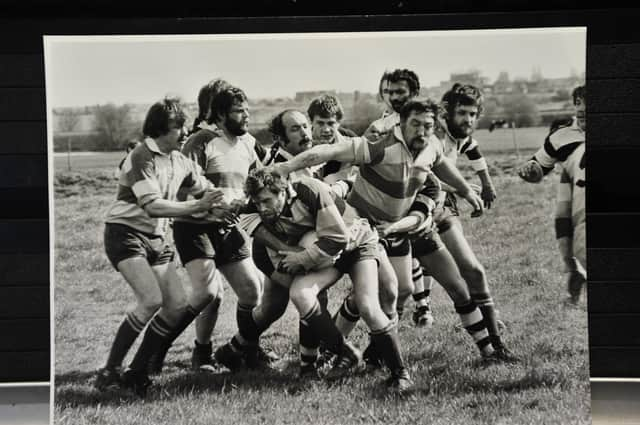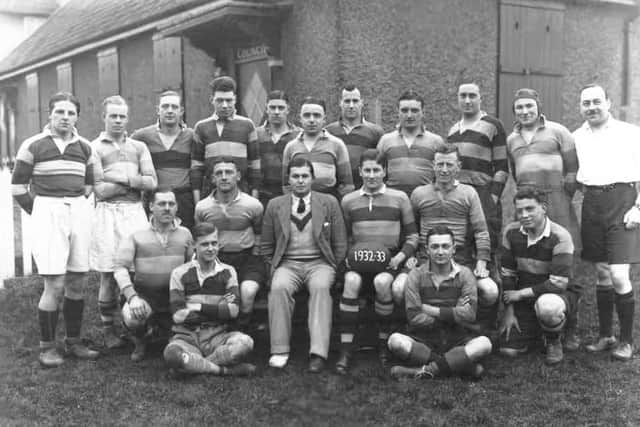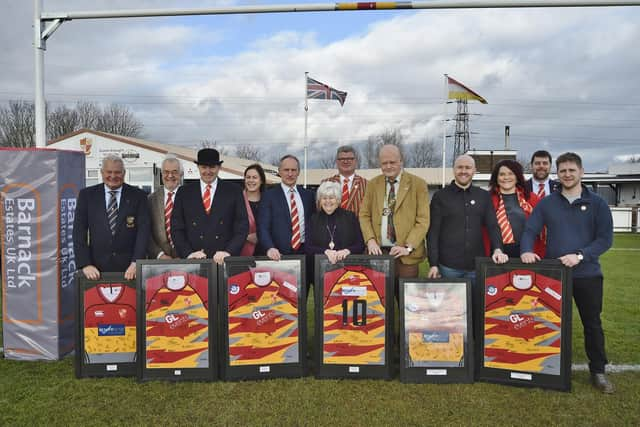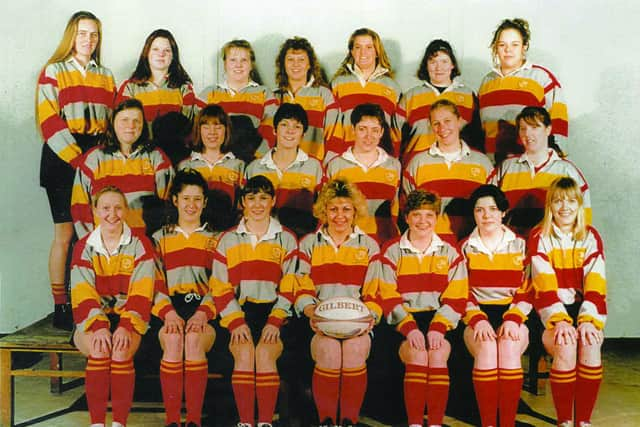Peterborough RUFC have a 100 year history full of great tales and larger-than-life heroes


It has been a fascinating history, with three men who started their rugby at the club going on to play for England. Members of the club have also been capped by Scotland, the USA, Lithuania, Germany and Zimbabwe.
Other former club players include a chief constable, an England hockey international, a ground-breaking scientist, the father-in-law of a soccer Premier League club's chairman, and a man who took over the running of author Rudyard Kipling's country estate.
Advertisement
Hide AdAdvertisement
Hide AdA judge, and a man he sentenced, even played alongside each other in the same team.


Numerous internationals have played against the club, along with an Olympic gold sprint medallist, a British heavyweight boxing champion, several cricket internationals and even a Lord of the Realm.
At the time Peterborough Rugby Club was founded, there was no NHS, no fridges, no television, let alone internet, and only one car between every 1,500 people.
Peterborough was in Northamptonshire, the city's hospital was still in the building that is now the museum and weekly markets were held in what is now called Cathedral Square where the Guildhall housed the town council.
Advertisement
Hide AdAdvertisement
Hide AdThe likes of Orton Longueville and Werrington were villages, well outside the city, whose population was around 35,500, just 16% of today’s figure.


In the early days the club played on the Eastfield Road Showground, now the site of Peterborough Regional College, where there were no changing rooms and no bar.
Players would have to come back to a hotel just around the corner from where WH Smith now stands, to have a bath and meal after each game.
Rugby and football were born from the same roots, but followed very different paths. While football became a business, dependant upon paying spectators, rugby insisted on being for players not spectators and was strictly amateur until the 1990s.
Advertisement
Hide AdAdvertisement
Hide AdThat was how so many international players graced the pitches at the old Showground, and then Fengate, with no question of any appearance fee.


They loved rugby and a match was a match, regardless of whether it was at Twickenham or on a cow field on the outskirts of a small market town on the Northamptonshire/Cambridgeshire border.
Peterborough Rugby Club was launched on February 25, 1924 when city councillor Archie Farrow hosted a meeting of like-minded individuals in his home which approved a set of rules for a new club and elected a committee.
Over the previous two years, young solicitor Arthur Mellows, who went on to become mayor of the city and have a school at Glinton named after him, had organised four matches to raise money for charity, two against King’s School and two against Stamford.
Advertisement
Hide AdAdvertisement
Hide AdThe players were mainly made up of ‘high society’ young men from the area.
Amongst them was Leo Price, a teacher at Uppingham School who was capped four times by England, and Graham Doggart, later to become chairman of the Football Association only to die suddenly, while chairing the FA AGM at its Lancaster Gate HQ in 1963.
Club rugby’s popularity peaked in the 1970s when Peterborough Rugby Club fielded five, sometimes even six, senior teams every Saturday.
In 1975, the club moved from the Eastfield Road Showground to a new home in Fengate, built on the site of the old municipal tip.
Advertisement
Hide AdAdvertisement
Hide AdPlayers were advised to have tetanus jabs before playing there, because of the risk of rusty old rubbish rising to the surface.
Children only started to play at the club after the move, when the Northborough Mini Rugby Group was brought under the umbrella of PRUFC. It took until 1995 for the club to have its first ladies team.
Everything changed with the introduction of professionalism and league rugby in the 1990s.
Some would say for the better of the sport, others to its detriment. Worcester Warriors were once in the same league as PRUFC, on their way to the Premiership and, ultimate collapse.
Advertisement
Hide AdAdvertisement
Hide AdThe club has had its fair share of noteworthy players, none more so than Ron Jacobs, capped 29 times by England and later president of the RFU.
Mike Berridge and Harry Wells also went on to play for England. Jon Phillips and Malcolm Foulkes-Arnold played hundreds of top-class matches for Northampton Saints and Leicester Tigers respectively and Ray Williams went on to be Tournament Director of the Rugby World Cup in Wales in 1991.
Members of PRUFC’s ‘band of brothers’ not only shed blood, sweat and tears for the club, but also for king and country. More than a dozen paid the ultimate sacrifice to allow us to enjoy the freedoms that we take for granted.
William Victor Hart was a real hero, the sort who inspired many a tale of gallantry in Boy’s Own magazine. After being awarded the Military Cross for ‘conspicuous gallantry’ at Dunkirk in 1940, he found himself isolated behind enemy lines in Tunisia two years later.
Advertisement
Hide AdAdvertisement
Hide AdBy now promoted to the rank of major, he decided that he and his 30 men would make themselves as big a nuisance to the Germans as possible. They attacked supply wagons, halted a military convoy by shooting at its tyres, sowed mines on the road in front of tanks and ambushed a lorry load of paratroopers, always disappearing before they could be captured.
They lived on bread and eggs that they traded for their clothing with local Arabs, and then had to walk a hundred miles in searing heat to get back to safety.
The history of a community rugby club is not just the story of capped internationals and war heroes though. It is the story of ‘ordinary folk’ who have had endless enjoyment, made lifelong friends and created treasured memories.
Many business deals have been struck because of Peterborough Rugby Club, there have been marriages and there have been births.
The club is eagerly looking forward to another century.